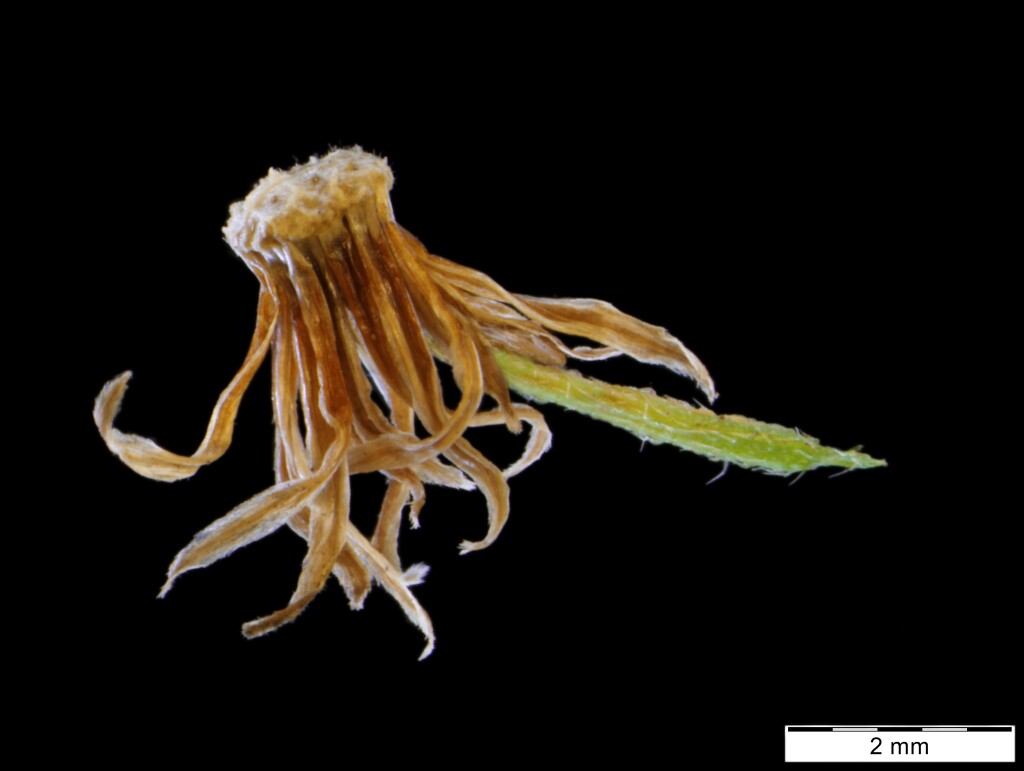Erigeron bilbaoanus
(Remy) CabreraAnnual to 2 m high; stem greenish, finely striate pale yellowish- or reddish-brown, unbranched between base and inflorescence, sparsely hispid (often with robust, tubercle based hairs). Lower leaves (narrowly-)oblanceolate, 2–9 cm long, 3–8 mm wide, finely strigose-scabrous mostly on the margins and midrib, entire or shallowly and distantly serrate; upper leaves narrow-elliptic to linear, 1.5–6 cm long, 2–6 mm wide, margins strigose-scabrous (hairs often longer and spreading towards the base), usually entire. Capitula numerous in a narrowly cylindric to narrowly pyramidal panicle; involucres ovoid to urceolate, 3–4 mm long; bracts virtually glabrous, lanceolate or narrowly triangular, glossy chestnut-brown inside at maturity; receptacle 1–1.5 mm diam., rather rough with irregularly raised margins to attachment scars. Outer florets with minute oblique, white to purplish, irregularly toothed limb to 0.5 mm long. Cypselas (slightly curved-)oblong, c. 1–1.5 mm long; pappus bristles straw-coloured, c. 2–3 mm long. Flowers mostly late summer and autumn.
GleP, VVP, VRiv, MuF, GipP, OtP, WaP, CVU, DunT, NIS, EGL, EGU, HSF, HNF, OtR, Strz. Also naturalised SA, NSW, ACT. Native to South America. An early introduction in Victoria, first collected in Gippsland in 1888. Although widespread, apparently not as successfully weedy as E. sumatrensis or perhaps overlooked. Mostly found in the eastern half of the State, often collected from riparian sites.
 Spinning
Spinning

